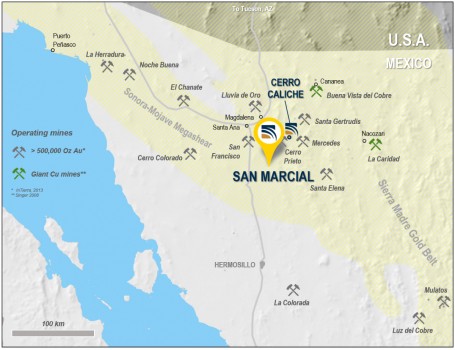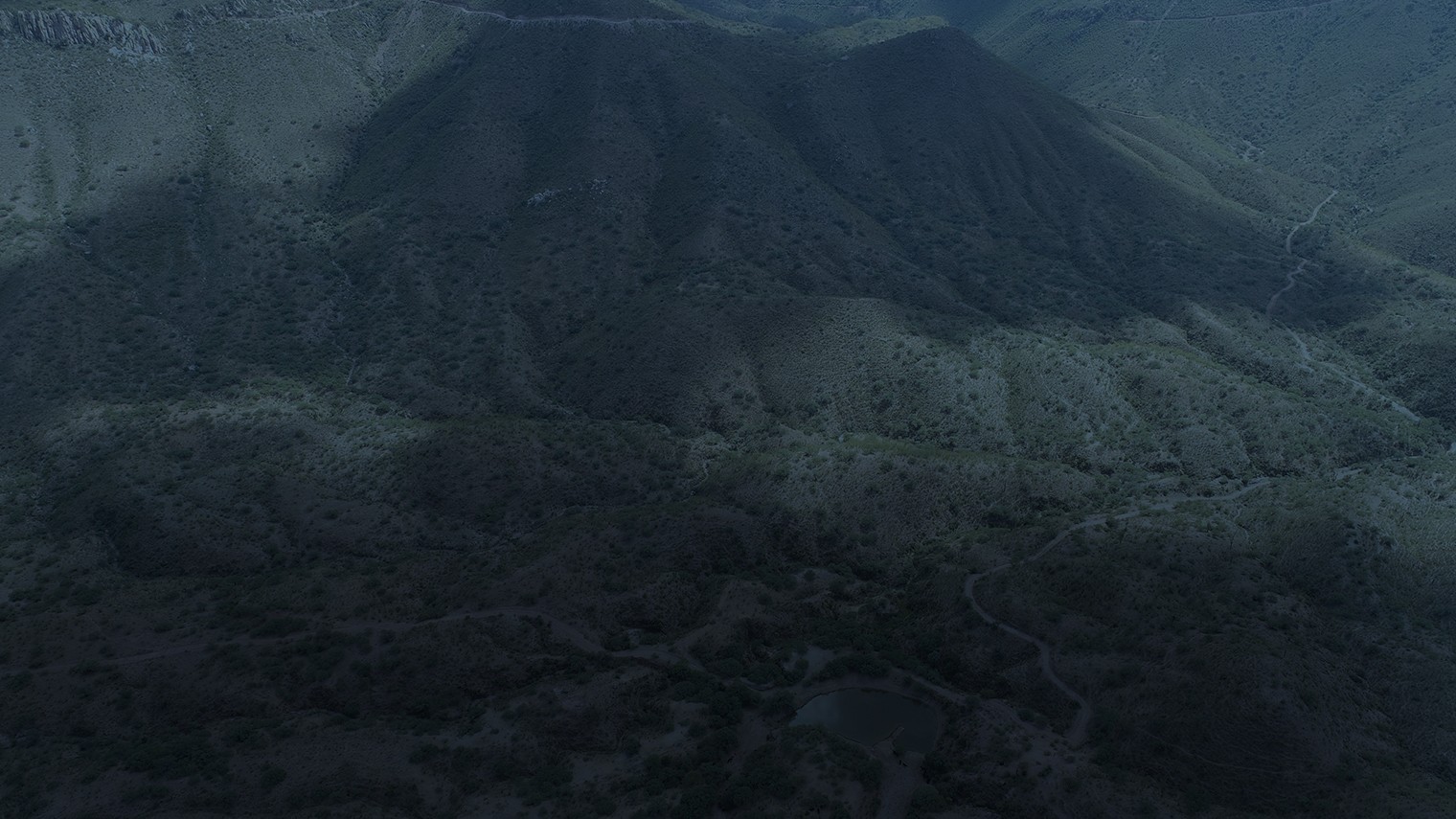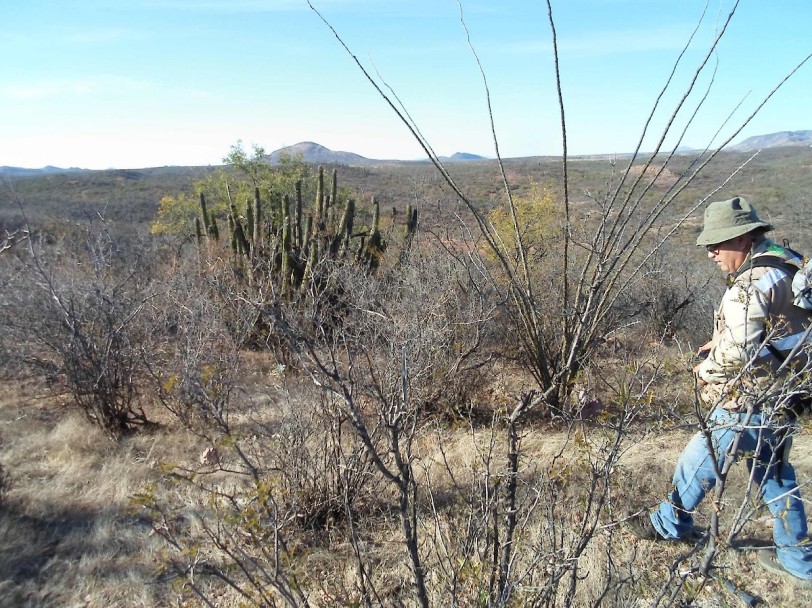
Mineralization types throughout the Cucurpe mining district include variants of epithermal low sulfidation veins and related mineralized dikes and associated volcanic domes. Local altered felsic dikes cut the mineralized meta-sedimentary rock units and may be associated with mineralization both in the dikes and meta-sedimentary rocks. The district has historically been regarded as vein dominated, but recently, open pit mining operations have been developed on disseminated and stockwork style gold mineralization.
The current interpretation of the structural and mineralization development of the Cerro Caliche project hypothesizes that a deeper intrusive stock underlays the district and is the source of mineralizing fluids and rhyolitic dikes. The interpreted normal deep faulting has provided a conduit for silica-rich mineralizing fluids, resulting in the deposition of quartz veins with gold and silver at the Project area and localization of some rhyolite dikes.
The predominant northwest trending orientation of structures is an important feature of the Project area. More than 25 strong structures with at least 200 m of strike length are counted which have generally a parallel arrangement, crossing the entire Project concession area holdings. These structures developed ahead of vein deposition and rhyolite dike intrusion which follow and fill the structures. Many veins show brecciation, which indicates movement along the structures during vein formation.
In addition to the silicification, other alteration assemblages are noted on the Project. Argillic alteration is represented as weak to moderate clay development in feldspars and the matrix of rhyolitic rocks. Limonite, consisting of hematite with lesser goethite and jarosite, is present and developed from oxidized sulphides, mainly cubic pyrite. In deeper more mafic rock types propylitic alteration is widespread.












